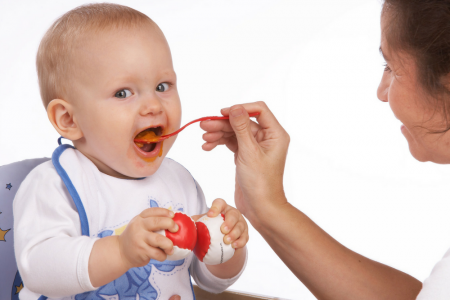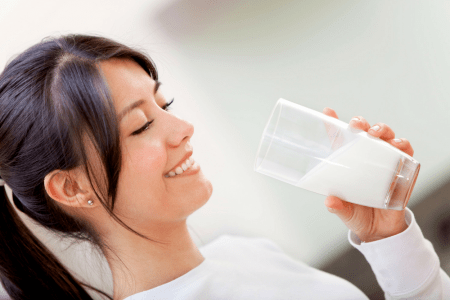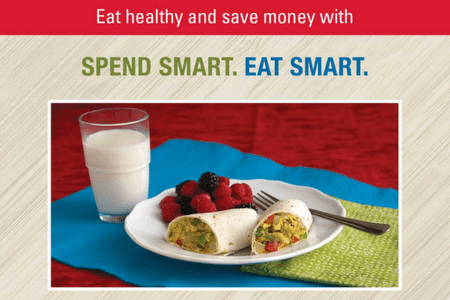WIC food packages and nutrition education are the chief means by which WIC affects the dietary quality and habits of participants. Did you know that these two benefits are among the top reasons for continued participation in WIC (in addition to the work of WIC personnel!), and that consistent 4-year participation in WIC was associated with better diet quality?
Eye on Nutrition brings focus to the foods and nutrients in the WIC food packages to shine a light on their importance to WIC participants. Potassium is a nutrient of public health concern across the lifespan. Luckily, it’s in many WIC foods. Be sure to check out potassium-rich recipes members of the WIC community have shared with us.
What is Potassium and Why is it Important?
What WIC-Eligible Foods Provide Potassium?
Is Potassium on the Nutrition Facts Label?
Education Resources
What is Potassium and Why is it Important?
Potassium is an essential mineral, is in all body tissues, and is required for normal cell function. It helps to balance out sodium and offset the negative effects of salt on blood pressure.
Potassium is a key component in the functioning of:
- Kidneys
- Heart
- Muscle contraction
- Nerve signaling
- Fluid balance
Potassium plays an important role in lowering blood pressure, thus reducing the risk of heart disease and stroke, but controlling high blood pressure during pregnancy is also important for mom and baby.
For mom, complications of high blood pressure during pregnancy include eclampsia, stroke, the need for labor induction (giving medicine to start labor to give birth), and placental abruption (the placenta separating from the wall of the uterus).
For the infant, complications of high blood pressure during pregnancy include low birth weight and preterm birth.
While other factors also affect blood pressure, increasing potassium (and reducing sodium) in the diet can help control high blood pressure (spoiler alert: foods high in potassium are naturally low in sodium).
Getting too little potassium can also deplete calcium in bones, and increase the risk of kidney stones.
The daily recommended amount of potassium is based on gender and age, with pregnant women needing the most at 2,900 milligrams (mg) per day, and breastfeeding women needing 2,800 mg per day.
What WIC-Eligible Foods Provide Potassium?
A number of WIC-eligible foods contain potassium, though not all foods may be available in every State, US Territory, or Indian Tribal Organization due to the flexibility they have in selecting foods for their WIC food packages. Among the WIC-eligible foods that provide potassium are:
- Legumes (beans, peas and lentils)
- Vegetables (including soybeans*)
- Fruits
- 100% juice
- Milk and milk substitution options:
- Yogurt
- Soy beverage
- Tofu
- Canned fish, particularly sardines
*Technically soybeans are in the legume category, but they can be purchased with the CVV since they’re only available in fresh and frozen forms, so we included them here! Foods beyond those in the WIC food packages that have potassium include cashew nuts, seafood, meat and poultry.
Beyond Bananas
Mention "a high potassium food" and many people often think first of a banana, but a number of fruits and veggies (and other foods) have more potassium than this staple fruit. Below is a sampling from this list from the Dietary Guidelines.
Food
Beet Greens (1 cup)
Lima Beans (1 cup)
Swiss Chard (1 cup)
Sapote or Sapodilla (1 cup)
Guava (1 cup)
Kiwi (1 cup)
Cantaloupe (1 cup)
Banana (1 medium)
Potassium
1309 mg
969 mg
961 mg
794 mg
688 mg
562 mg
473 mg
451 mg
Is Potassium on the Nutrition Facts Label?
Potassium is a required nutrient on the Nutrition Facts label since most Americans don’t always get enough each day, and low intakes are associated with health concerns!
Education Resources
Help your participants explore vegetables and fruits that are in season with the Seasonal Produce Guide.
Get inspired by WIC State-developed resources, including yearly farmers’ market cookbooks, and share them with your participants. (Examples of farmers’ markets training materials are also available for those interested in what other WIC State agencies are doing.)
Keep Nutrition Facts label fact sheets for vitamins and minerals handy. These provide action steps for consuming a diet rich in vitamins and minerals (including potassium), and charts that identify food sources of each vitamin and mineral.
Explore MyPlate, which offers something for everyone:
- Activity sheets for kids, including bingo, coloring sheets and a food critic activity to help kids try new fruits, vegetables, or a new recipe.
- Interactive resources for participants to:
- Get a personalized MyPlate Plan (Plan MiPlato) that takes pregnancy and breastfeeding status into account.
- Take the MyPlate Quiz to see how their eating habits stack up against recommendations and get tailored resources and a personal quiz results code to sync with the Start Simple with MyPlate app.
- Set simple goals based on their personal needs with the Start Simple with MyPlate app. Sync results from the MyPlate Quiz for a personalized experience. Join challenges, see progress, and earn badges to celebrate successes.
- Test their Food Group IQ with fun quizzes.
- Hear healthy eating solutions from families via videos, and download Food Planning During the Coronavirus Pandemic (in English and Spanish).

 WIC Works Resource System
U.S. Department of Agriculture
WIC Works Resource System
U.S. Department of Agriculture



